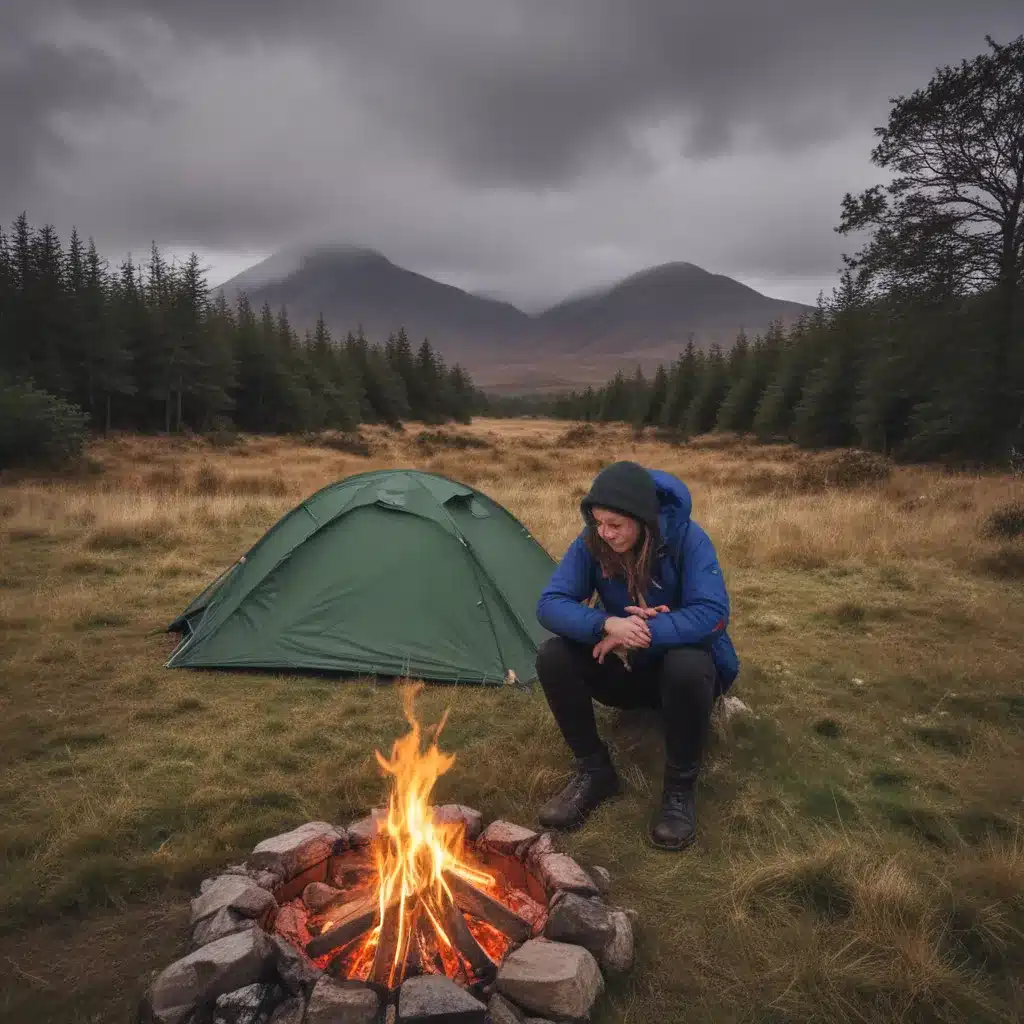
Staying Warm While Camping in Scotland
When the cooler months start to roll in, the thought of camping in the Scottish Highlands can be enough to send shivers down your spine. But don’t let the chilly temperatures deter you – with the right preparation and gear, you can stay cozy and comfortable even in the face of Old Man Winter.
I’ve had my fair share of winter camping adventures in the Highlands, from hunkering down in a snow-covered quinzhee to cozying up in a canvas hot tent. And let me tell you, learning how to outsmart the elements has been a game-changer. So, grab a cup of tea and let me share my top tips for staying warm while camping in Scotland.
Understand the Heat Loss Equation
The first step to beating the cold is understanding how your body loses heat in the great outdoors. There are five main mechanisms at play: convection, conduction, evaporation, respiration, and radiation. As Paul Kirtley eloquently explains, convection and conduction are the big ones to watch out for when you’re tucked away in your sleeping bag.
Convection happens when the warm air around your body gets whisked away, allowing colder air to take its place. You need to create a cozy pocket of insulating air to trap that precious body heat. That’s where a well-fitting sleeping bag and a windproof bivvy bag come into play.
Conduction, on the other hand, is all about heat transfer through direct contact. If you’re lying on a cold, frozen surface, that heat is going to get sucked right out of you. A thick, insulating sleeping pad is an absolute must to create a barrier between you and the chilly ground.
Gear Up for the Cold
Now that you understand the heat loss culprits, it’s time to build your ultimate winter camping kit. First and foremost, you’ll want a sleeping bag that’s rated for the conditions you’ll be facing. As a general rule, I recommend a 4-season bag for any winter trips in the Highlands.
And don’t forget about that all-important sleeping pad. An inflatable air mattress works wonders, as the trapped air provides excellent insulation from the cold ground. For extra comfort and warmth, consider layering a foam pad underneath.
Of course, your clothing choices are just as crucial. Stick to a base layer of merino wool to wick away moisture, and don’t be afraid to bundle up with multiple insulating mid-layers. A warm hat, gloves, and thick socks are essential for keeping your extremities toasty.
Choose Your Campsite Wisely
Where you pitch your tent can make a big difference in how warm you stay through the night. As a general rule, you’ll want to avoid the lowest-lying areas, as cold air has a tendency to pool in these chilly pockets. Instead, seek out a slightly elevated spot that’s sheltered from the wind.
The folks at Watch Me See recommend looking for a site that’s “in between the highest and lowest spots” – not too exposed, but not too tucked away, either. And don’t forget to consider what’s overhead, too. Camping under the canopy of a forest can provide an extra layer of insulation against the elements.
Master the Art of Layering
When it comes to staying warm in your sleeping bag, less is often more. As tempting as it may be to bundle up in every layer of clothing you’ve got, that can actually work against you. As Paul Kirtley advises, you’ll want to stick to just your base layers, socks, and a hat – anything more and you risk overheating and getting sweaty, which will quickly zap your body heat.
If the temperatures really plummet, you can always throw on an extra jacket or wrap yourself in a down blanket. And don’t forget to keep your water bottle, gloves, and other small essentials close at hand, either – stashing them in your sleeping bag will help keep them from freezing solid overnight.
Embrace the Power of Hydration and Nutrition
Staying hydrated and well-fed is crucial for maintaining your body temperature in the cold. Make sure to drink plenty of fluids throughout the day, and consider packing some calorie-dense, protein-rich foods for dinner. As Chris Townsend points out, processing meat is particularly thermogenic, keeping your internal fires stoked for hours.
And don’t forget about your pre-bedtime routine. Spend a few minutes doing some light exercise to get your heart rate up and your blood flowing before you climb into your sleeping bag. That little extra bit of warmth can make a world of difference once you’re tucked in for the night.
Keep It Dry, Keep It Cozy
Finally, keeping your sleeping setup dry is absolutely essential for staying warm. As Paul Kirtley emphasizes, any moisture, whether from the environment or your own body, can dramatically reduce the insulating properties of your sleeping bag and other gear.
Make sure to use a high-quality, waterproof bivvy bag to shield your sleeping bag from the elements. And when you wake up in the morning, be diligent about airing out your kit – shake off any frost or condensation, and let your gear dry in the weak winter sunshine whenever possible.
With these tips in your back pocket, you’ll be well on your way to conquering the cold and enjoying the true magic of camping in the Scottish Highlands, no matter the season. So grab your gear, pack your sense of adventure, and get ready to experience the great outdoors in a whole new way. Loch Ness Shores is the perfect basecamp for your Highland explorations – check out our cozy, eco-friendly glamping pods and start planning your next winter wonderland escape!

